An Introduction to Julius Caesar Using Multiple-Perspective Universal Theme Analysis

- Resources & Preparation
- Instructional Plan
- Related Resources
Students begin by evaluating the universal theme of betrayal from multiple perspectives. After reading time period scenarios as well as reflecting on personal experiences, students use critical thinking skills to explore and identify interventions for each the betrayal scenario, including their personal examples. Students research Roman history, the setting of Shakespeare's drama, The Tragedy of Julius Caesar . Applying this research, students write their own critical perspective of a scenario depicting plausible betrayal scenes from Roman times. As the culminating project and assessment, students create comic strips with the student interactive Comic Creator.

Featured Resources
- Scenarios Guides and PowerPoint : Use the guides to investigate the feelings of betrayal in different places and time periods and the PowerPoint to project each scenario to the entire class during discussion.
- Comic Strip Assignment Checklist : Use this handout to explain the assignment and highlight the process for the completing the assignment.
- Comic Strip Assignment Rubric : Use this rubric to score the comic strip example and guide students when creating their comic strips.
- Comic Strip Example : Use this example to score the grading rubric with the students.
From Theory to Practice
In their article, “Reading From Different Interpretative Stances: In Search of a Critical Perspective,” Leland, Ociepka, and Kuonen (2012) report a study that they conducted in which eighth grade American students were introduced to several critical perspectives while reading short stories (430). Speaking of the results, Leland, Ociepka, and Kuonen (2012) report, “The data we collected provides evidence that the activity of reading from different stances encouraged students to engage in flexible thinking and to see multiple perspectives” (436). Morgan and York (2009) support this concept by explaining that “To grow in understanding, students need to consider the views of the people whose stories are told and explore those views in the context of the world as seen through the eyes of those people” (307). Therefore, through the exploration of stories that include many different perspectives, students use critical thinking skills to empathize with people and characters who may seem very different from them (Morgan and York 308). Specifically, Morgan and York (2009) describe specific strategies as a means for role playing to introduce multiple perspectives. DelliCarpini and Gulla (2006) describe the value of inviting students to add their perspectives to the mix of perspectives in the classroom. DelliCarpini and Gulla (2006) explain, “All students can benefit from the opportunities that our story-sharing approach provides, and they can begin to understand how their unique stories add perspective to events and see the connections between their background experiences, world events, and the classroom” (49). Because “engagement with multiple perspectives under the skilled guidance of a teacher is potentially transformative,” in this lesson, students explore multiple perspectives to address critical thinking skills involved in understanding universal themes (Morgan and York 307). The Tragedy of Julius Caesar takes place in 44 B.C.; therefore, students initially may find the lives of Julius Caesar and his contemporaries irrelevant to their lives in the 21st century. However, using multiple perspectives to investigate the universal theme of betrayal, students gain a sense of empathy for the characters experiencing betrayal and familiarity with their feelings. An additional value of this lesson is that students use otherwise hard to address critical thinking skills to develop an appreciation for differences in cultures and understanding of universal themes, while also finding relevancy in The Tragedy of Julius Caesar .
Common Core Standards
This resource has been aligned to the Common Core State Standards for states in which they have been adopted. If a state does not appear in the drop-down, CCSS alignments are forthcoming.
State Standards
This lesson has been aligned to standards in the following states. If a state does not appear in the drop-down, standard alignments are not currently available for that state.
NCTE/IRA National Standards for the English Language Arts
- 1. Students read a wide range of print and nonprint texts to build an understanding of texts, of themselves, and of the cultures of the United States and the world; to acquire new information; to respond to the needs and demands of society and the workplace; and for personal fulfillment. Among these texts are fiction and nonfiction, classic and contemporary works.
- 2. Students read a wide range of literature from many periods in many genres to build an understanding of the many dimensions (e.g., philosophical, ethical, aesthetic) of human experience.
- 3. Students apply a wide range of strategies to comprehend, interpret, evaluate, and appreciate texts. They draw on their prior experience, their interactions with other readers and writers, their knowledge of word meaning and of other texts, their word identification strategies, and their understanding of textual features (e.g., sound-letter correspondence, sentence structure, context, graphics).
- 4. Students adjust their use of spoken, written, and visual language (e.g., conventions, style, vocabulary) to communicate effectively with a variety of audiences and for different purposes.
- 11. Students participate as knowledgeable, reflective, creative, and critical members of a variety of literacy communities.
Materials and Technology
- Computers with internet access and printing capabilities
- Microsoft PowerPoint
- LCD projector
- Copies of certain printouts
- Writing instruments
- Scenarios Guide
- Multiple-Perspectives PowerPoint
- Comic Strip Planning Sheet
- Comic Strip Assignment Rubric
- Comic Strip Assignment Checklist
- Comic Strip Example
- Presentation Reflection Sheet
This website provides detailed information about Ancient Roman history. The teacher accesses this website and its many links before the lesson to become familiar with Ancient Rome. The students use this website to research detailed information about Ancient Rome to be applied to their projects.
This website contains accurate, detailed information about Roman history and culture so that the teacher is prepared to assist students during their research and comic strip development. Additionally, free, reproducible resources about Roman history and culture are available from this site for the teacher’s use.
Students use this website to investigate the many avenues of Roman history and apply that knowledge to create an original scenario of betrayal that would be consistent with Roman times. This website is interactive and contains information that is general enough so as not to overwhelm the students for this activity but also provides enough detail to stimulate critical thinking.
Preparation
- Review the Ancient Roman History Website before the lesson to research Ancient Rome in order to facilitate the research project. This website contains detailed information about Roman culture, religion, and people.
- Visit the Roman History Interactive Website before the lesson to become familiar with Roman history in order to facilitate the research project. This website contains accurate, detailed information and free reproducible resources.
- Access the Comic Creator to become familiar with this interactive website in order to assist the students during the lesson.
- Copy an even number of each scenario guide . There are three guides, and each student only gets one guide. Be prepared to distribute the guides so that in a class of 30 students approximately 10 students have each scenario.
- View and become familiar with the Multiple-Perspectives PowerPoint .
- Copy the Comic Strip Planning Sheet , Comic Strip Assignment Rubric , Comic Strip Assignment Checklist , Comic Strip Example , and Presentation Reflection Sheet for each student.
Student Objectives
Students will:
- draw conclusions about the function of universal themes in different scenarios.
- examine the connection between multiple perspectives and universal themes when reading different perspectives.
- create a six-panel comic strip depicting a betrayal scene from Roman perspectives.
- present a comic strip justifying their betrayal scenes from Roman perspectives.
Session One
What inventions could be used for each scenario? What are the resulting outcomes from these interventions? How would these interventions improve the situations for the characters? Why is it important to analyze situations and interventions from your own life experiences? How could these reflections help you and/or characters in the future?
- Ask students to freewrite about a time in their lives when they felt betrayed.
- Discuss the responses as a class noting feelings associated with the betrayal and interventions that could have prevented the betrayal.
- Distribute the Scenarios Guide making sure that every third student has a different scenario.
- Instruct students to read their scenarios silently and complete Part I of the Scenarios Guide .
- Ask for a volunteer to read the 21st century scenario and project it on the board using the Multiple-Perspectives PowerPoint for the rest of the class to follow along.
- Discuss Part I for the 21st century scenario from the Scenarios Guide .
- Repeat steps five and six for the 20th century scenario and 19th century scenario.
- Group students according to their scenarios creating three groups.
- Instruct students to brainstorm and record at least three inventions that could have prevented the betrayal in their scenario.
- Reconvene as a class to discuss the interventions for each scenario.
- Project the definition of a universal theme and solicit examples from the class.
- Ask students to revisit their freewrite to develop three interventions that could have prevented the betrayal.
Session Two
- Ask students to create their own modern-day betrayal scenario that has not already been discussed.
- Elicit discussion about betrayal in today’s society.
- Handout the Comic Strip Assignment Checklist , Comic Strip Assignment Rubric , Comic Strip Planning Sheet , and the Comic Strip Example .
- Review the assignment with the students.
- Give students time to assess the Comic Strip Example .
- Review their findings being sure to highlight the inadequacies, such as the failure to include a Planning Sheet , captions, six panels, and enough detail to fully understand the example of betrayal.
- Discuss how this comic strip could be improved, such as adding three more panels, details, captions, callouts, and props.
- Divide class into small groups.
- Give each group a computer with Internet access.
- Give the students the remainder of the period to research Roman history and complete the Comic Strip Planning Sheet .
Session Three
- Ask students to list five new facts they learned about Roman history.
- Discuss these facts as a class.
- Give students the period to complete the comic strip using the Comic Creator .
- Instruct the students to print out the comic.
- Instruct students to review for their comic strip presentation when complete.
Session Four
- Give students ample time to review their comic strips and presentation plans.
- Handout the Presentation Reflection Sheet and instruct students to complete it for each group presentation.
- Instruct students to present their comic strips one group at time.
- After each presentation, elicit feelings of betrayal and intervention ideas for each comic scenario.
- Instruct students to complete the Presentation Reflection Sheet for their own presentation and turn it in when completed.
- At the end of the lesson, review universal themes and multiple perspectives with a series of open-ended questions, such as:
How did we see the universal theme of betrayal from several perspectives? What characteristics make betrayal a universal theme? What other types of universal themes do we see in our lives? How are universal themes helpful to us? How is it helpful to think about different perspectives?
- After completing this activity, analyze universal themes from other stories read throughout the year.
- After reading The Tragedy of Julius Caesar , students should analyze the multiple perspectives of different characters in the play. A related ReadWriteThink lesson that could supplement this lesson is What Did George Post Today? Learning About People of the American Revolution Through Facebook . For this assignment, students could create Facebook-like pages for characters in The Tragedy of Julius Caesar . This type of role play with the characters could broaden the students understanding of critical perspectives and universal themes.
Student Assessment / Reflections
- Assess the Comic Strip Planning Sheet to ensure that the students’ comic strips demonstrated thoughtful analysis and preparation.
- Assess students or groups using the Comic Strip Assignment Rubric .
- Review the Presentation Reflection Sheet to informally assess the students’ understanding of universal themes and multiple perspectives.
- Professional Library
- Calendar Activities
- Lesson Plans
- Student Interactives
The Comic Creator invites students to compose their own comic strips for a variety of contexts (prewriting, pre- and postreading activities, response to literature, and so on).
Add new comment
- Print this resource

Explore Resources by Grade
- Kindergarten K
Julius Caesar

55 pages • 1 hour read
A modern alternative to SparkNotes and CliffsNotes, SuperSummary offers high-quality Study Guides with detailed chapter summaries and analysis of major themes, characters, and more. For select classroom titles, we also provide Teaching Guides with discussion and quiz questions to prompt student engagement.
Acts Summaries & Analyses
Character Analysis
Symbols & Motifs
Important Quotes
Essay Topics
Discussion Questions
Discussion Questions Beta
Use the dropdowns below to tailor your questions by title, pre- or post-reading status, topic, and the difficulty level that suits your audience. Click "Generate," and that's it! Your set of ready-to-discuss questions will populate in seconds.
Select and customize your discussion questions!
Your Discussion Questions
Your results will show here.
Our AI tools are evolving, sometimes exhibiting inaccuracies or biases that don't align with our principles. Discover how AI and expert content drive our innovative tools. Read more
Related Titles
By William Shakespeare

All's Well That Ends Well
William Shakespeare

A Midsummer Night's Dream

Antony and Cleopatra

As You Like It

Henry IV, Part 1

Henry IV, Part 2

Henry VI, Part 1
Henry VI, Part 3

Love's Labour's Lost

Measure For Measure

Much Ado About Nothing
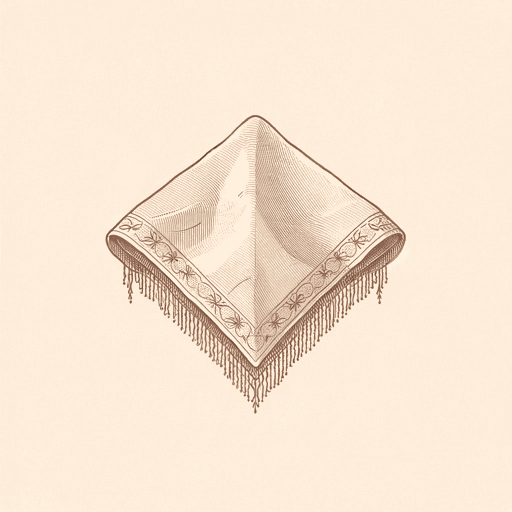
Featured Collections
British Literature
View Collection
Elizabethan Era
Plays That Teach History
Shakespeare
Tragic Plays
Elementary Discussion Questions: Julius Caesar
Compare and contrast.
How are Cassius and Brutus similar and different?
Name other power hungry characters from stories, film, TV, or politics. Why is this a dangerous quality?
If you were in the play who would you want to be?
How do you handle a situation when one of your best friends becomes bossy or snobbish? What do you do if other people start talking about your friend behind his or her back?
Why is it a bad idea to run away from your mistakes? Is it good to take the punishment for your crime?
Have you ever made a hasty decision, like Cassius, before you knew all the facts?
Who gave a better speech, Brutus or Antony? Who do you think was right?
Cassius flatters Brutus to convince him to join his cause. How do we use flattery today to get what we want?
Look at the opening scene between Flavius and the cobbler 1.1.1-24. What is a pun?
Shakespeare’s World
Most everyone in Shakespeare’s time knew the sad story of Caesar. Think of an interesting historical figure that you would like to write a play about.
There are some anachronisms in the play, such as the sound of a clock striking, before clocks had been invented. Is this bad? Can you think of any other anachronisms you have seen in movies or books? Do you think Shakespeare would be concerned about this?
What are some examples of superstition and bad omens in the play that lead up to Caesar’s death? Do you think Shakespeare was superstitious? Do you believe in any superstitions? (FYI, It is likely Shakespeare, like Cassius, died on his birthday.)

The Winter's Tale
June 18 - September 6, 2024
Engelstad Shakespeare Theatre
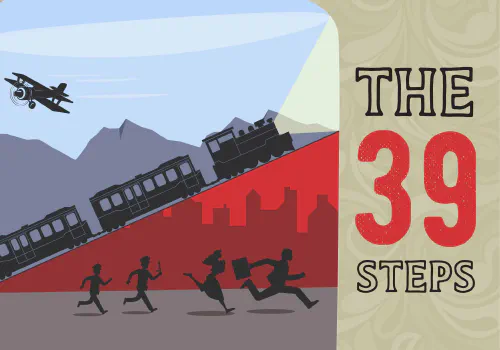
The 39 Steps
June 22 - October 5, 2024
Randall L. Jones Theatre
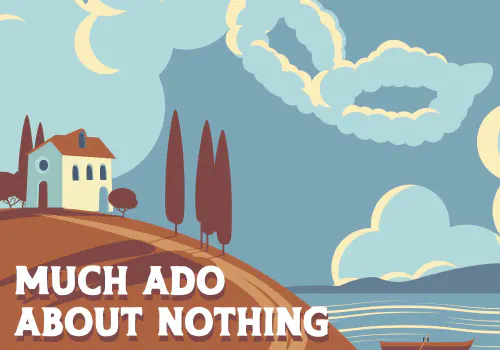
Much Ado About Nothing
June 21 - October 5, 2024
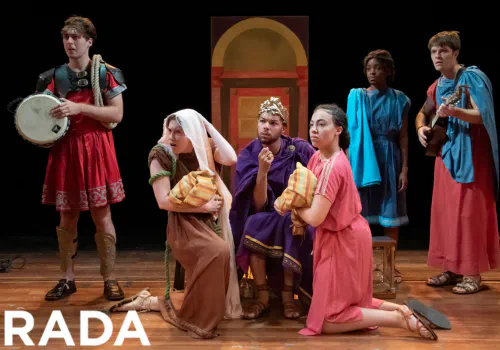
RADA 2024 Production
July 30-August 3, 2024
Eileen and Allen Anes Studio Theatre
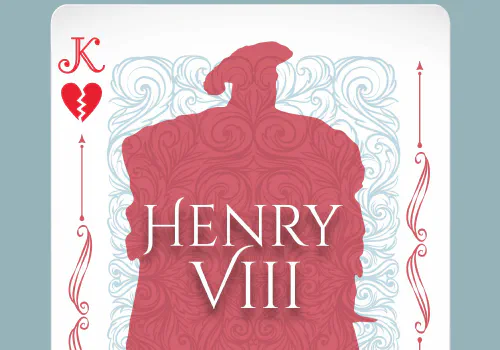
June 17 - September 5, 2024
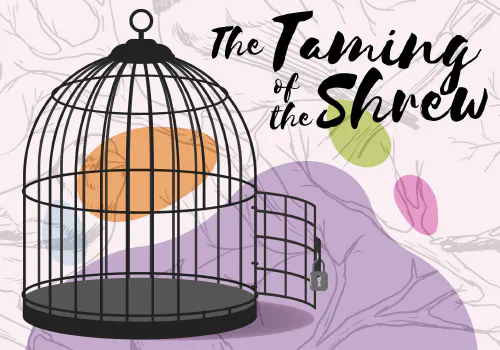
The Taming of the Shrew
June 19 - September 7, 2024
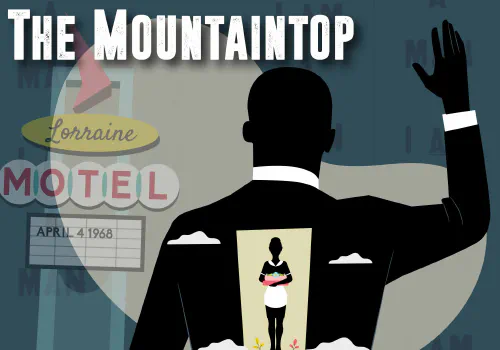
The Mountaintop
July 13 - October 5, 2024
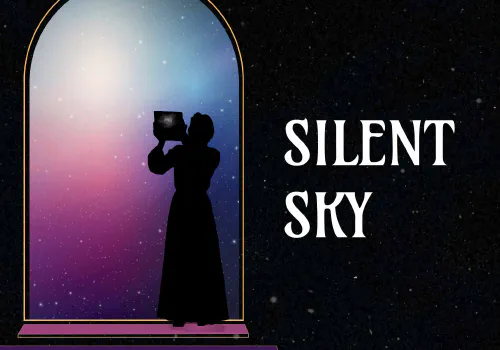
July 12 - October 5, 2024

IMAGES
VIDEO
COMMENTS
developed an extensive list of questions for students to answer and discuss while reading Julius Caesar. McWhorter also developed a list of follow-up discussion questions for after reading the play. These questions were based off of the Signet Classic Edition of Julius Ceasar. Click on the links below to view a teacher's guide on analyzing this ...
Research the life and actual events that we know about Caesar's murder. How much artistic license did Shakespeare take in his play? 3.Compare what we know of Caesar's actions in the play from what he is accused of by Casssius and Brutus. Was he a threat to the republic or not?
English Julius Caesar Act Two. 20 terms. maggielambert2. Relationships and Sexual Wellness. 26 terms. sdinham Teacher. Act 3 Critical Thinking Questions. 30 terms. Brooklyn_Hinzman. Sets found in the same folder. Shakespeare Test Review. 32 terms. hasi834. Honors English 10 SAT List #6. 15 terms. hasi834.
Julius Caesar: Study Questions with Answers. Julius Caesar. : Study Questions with Answers. 1) Why are the tribunes Flavius and Marullus so upset at the opening of the play? The tribunes are angry that the working class citizens of Rome gather to celebrate Caesar's victory, while forgetting Pompey, the Roman hero (and a part of the First ...
Earlier, we looked at the relationship between gender and power, gender and credibility, and gender roles overall, particularly in the marriages of Caesar and Calphurnia and Brutus and Portia. In this act, we get the news Portia has died. 4. CHARACTERIZATION // IRONY. When Brutus receives the news of Portia's death in front of several other ...
Suggested Passages for CRs and Essential Questions 198 4. Julius Caesar Project Options 199 5. Design Tips for Post-Play Poll and Final Play Assessment 205 Appendix A: ... critical thinking, due to the requirements of criterion-based judgment, but analysis and synthesis (or "creation") are also high-level stages
The author Alice Walker, one of Hurston's greatest admirers, finds Hurston's views sometimes "exasperating." She notes that this essay "presents two stereotypes: the "happy darky' who sings and dances for white folks, for money and for joy; and the educated black person who is, underneath the thin veneer of civilization, still a "heathen."
Study with Quizlet and memorize flashcards containing terms like What are the people doing that angers Marullus and Flavius?, Why do the people's actions anger Marullus and Flavius?, What do Marullus and Flavius decide to do that eventually gets them killed? and more.
After reading time period scenarios as well as reflecting on personal experiences, students use critical thinking skills to explore and identify interventions for each the betrayal scenario, including their personal examples. Students research Roman history, the setting of Shakespeare's drama, The Tragedy of Julius Caesar. Applying this ...
I) Multiple Choice. Read these passages from act I of Julius Caesar, and then answer the question that follows each passage. Refer to the passage in answering the question. Circle the correct answer to each question. Act I, Scene I. COBBLER: Truly, sir, to wear out their shoes, to get myself into more work. But indeed, sir, we make holiday, to ...
Critical Evaluation. The first of William Shakespeare's so-called Roman plays—which include Coriolanus (pr. c. 1607-1608, pb. 1623) and Antony and Cleopatra (pr. c. 1606-1607, pb. 1623 ...
Why Julius Caesar? When one thinks of the concepts of Shakespearean drama, murder, and intrigue, the play Julius Caesar might quickly come to mind. A man with great ambition is surrounded by a ...
Read these passages from act V, scene I of Julius Caesar, and then answer the question that follows each passage. Refer to the passage in answering the question. Circle the correct answer to each question. ANTONY: Octavius, lead your battle softly on, Upon the left hand of the even field. OCTAVIUS: Upon the right hand I, keep thou the left.
Julius Caesar Questions and Answers - Discover the eNotes.com community of teachers, mentors and students just like you that can answer any question you might have on Julius Caesar
JULIUS CAESAR essential questions. 1/28/2013 ... People can make ethical choices through thinking more about their ending than the means they took to get to that ending. Cergio Angel Period 5. 1/31/2013 11:30:28 am. 1) The end can sometimes justify the means in good ways. Like if someone were to help out many sick people get better using your ...
Thanks for exploring this SuperSummary Study Guide of "Julius Caesar" by William Shakespeare. A modern alternative to SparkNotes and CliffsNotes, SuperSummary offers high-quality Study Guides with detailed chapter summaries and analysis of major themes, characters, and more. For select classroom titles, we also provide Teaching Guides with discussion and quiz questions to prompt student ...
Yes, Caesar ignored many warnings. Explain how Brutus justifies the assassination in his speech to the crowd. Brutus explains his sacrifice of Caesar's life as doing what's best for Rome. Brutus went on to explain that he would sacrifice himself if it was in Rome's best interest. Explain how Antony turns the crowd against the conspirators.
Shakespeare's World. Most everyone in Shakespeare's time knew the sad story of Caesar. Think of an interesting historical figure that you would like to write a play about. There are some anachronisms in the play, such as the sound of a clock striking, before clocks had been invented.
The main purpose of Shakespeare's persistent dissociation of Caesar's body and spirit is, no doubt, to show up the foolishness and futility of the assassination. The whole second part of the play ...
Answers. 1. When he tells Antony to touch Calphurnia in the race, Antony says, "When Caesar says 'Do this,' it is performed.". 2. The Soothsayer warns, "Beware of the ides of March ...
By swallowing hot coals. Who makes an appearance at the end of Act 4? The ghost of Caesar. Study with Quizlet and memorize flashcards containing terms like What are Antony, Octavious, and Ledipus doing at the beginning of the scene?, What do Antony and Octavious think about Ledipus?, What does Cassius say to Brutus when he arrives at Brutus's ...
•Demonstrate their knowledge of Julius Caesar by answering questions and connecting main events and characters in the play to the development of theme. LA.RL.9-10.1 Cite strong and thorough textual evidence and make relevant connections to support analysis of what the text says explicitly as well as inferentially, including